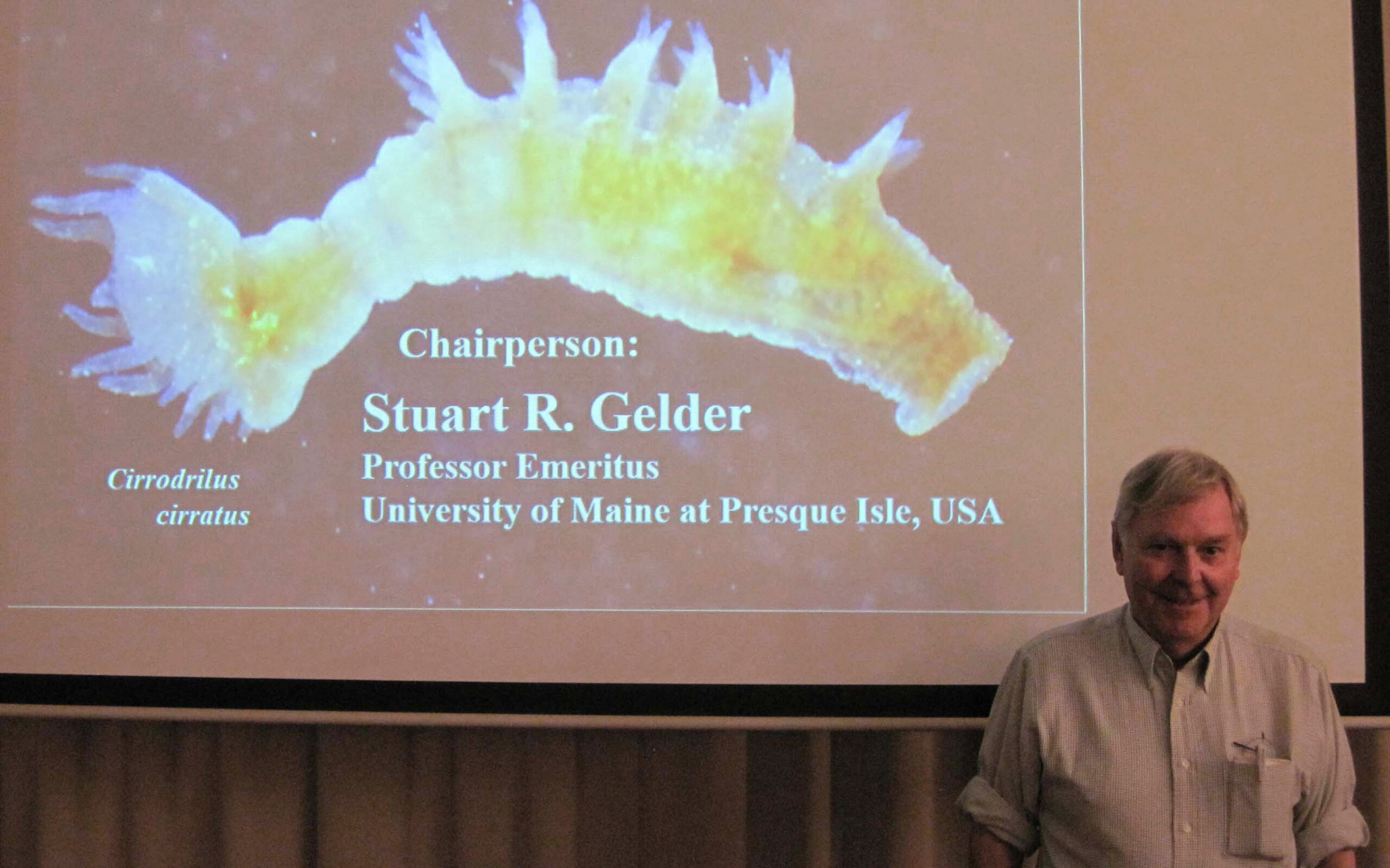
PRESQUE ISLE, Maine — Dr. Stuart R. Gelder, emeritus professor of biology at the University of Maine at Presque Isle, recently attended the 14th International Symposium on Aquatic Oligochaetes (ISAO), organized by Dr. Akifumi Ohtaka and held at the University of Hirosaki in Japan.
As a past organizer of the seventh annual symposium held at UMPI in 1997, Gelder was asked to join the Japanese organizing committee. Ohtaka visited UMPI twice in 1997, initially to start a joint research project and then, four months later, to attend the symposium. The research project centered on his finding the crayfish worm collection of Professor H. Yamaguchi, which was thought to have been destroyed during an earthquake in 1967. This collection of specimens was made in Japan and Korea between 1932 and 1935, and it remains to this day the basis of crayfish worm research in East Asia.
Permission was obtained for it to be shipped to UMPI, where Gelder and his undergraduate research student, Susan M. Peterson of Caribou, spent two years examining and producing a preliminary catalogue of the identifiable worms. After the preliminary catalogue was completed in 1999, Ohtaka continued to study and curate the collection so that it is now in the permanent Invertebrate Collection of the Hokkaido University Museum, Sapporo, Japan. The results appear in the current symposium proceedings, authored by A. Ohtaka, S.R. Gelder and S.M. Peterson.
Symposium organizers divided the presentation of research papers into eight sections. They asked Gelder to be the chairperson of one of these sections, entitled “Branchiobdellidan [crayfish worms] biology,” and give the keynote talk. He introduced the session in front of a picture of Cirrodrilus cirratus, the first species to be described from East Asia. The actual specimen was collected by Professor Yamaguchi, and sent in a preservative jar to the Hamburg Museum in Germany in the late 1930s. Fortunately, it survived the city’s firestorm in 1943. Although all the museum’s catalogues were destroyed, Dr. Gelder recognized the specimens from the handwritten label during his 1985 visit as part of the third ISAO meeting held in Hamburg.
Gelder’s keynote address was entitled, “Endemic branchiobdellidans (Annelida: Clitellata) on commercial North American crayfish; with ectosymbiotic associations expressed according to the two dimensional continuum model.” This presentation dealt with the native branchiobdellidans on commercial North American crayfishes being introduced into Europe and East Asia.
The following paper, “North American Branchiobdellida (Annelida: Clitellata) or Crayfish Worms in France: the most diverse distribution of these exotic ectosymbionts in Europe”, by Jean-Francois Parpet and S. R. Gelder was the second paper in a series on crayfish worms in France, primarily documenting the distribution of introduced North American species. This work culminates 12 years of investigation and collaboration.
One important feature of the symposium is the “microscope session,” where attendees bring mounted specimens for colleagues to examine. Specimens of crayfish worms had been removed from North American signal crayfish collected in Estonia. These were mounted by Dr. T. Timm on a microscope slide and it was assumed these worms had been imported on the host crayfish. However, on careful examination, Gelder was able to identify them as European worms that had adopted the introduced crayfish.
Results like these presented at the symposium are valuable not just for pure science, but also in recognizing the changes, and often damage, caused by invasive species, whether introduced legally or illegally.
Submitted by the Community and Media Relations Office of the University of Maine at Presque Isle.




